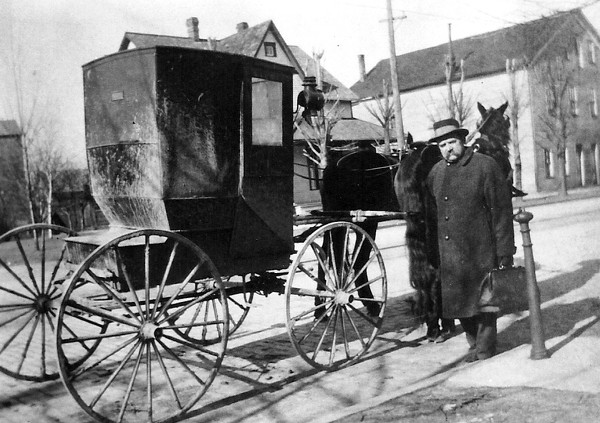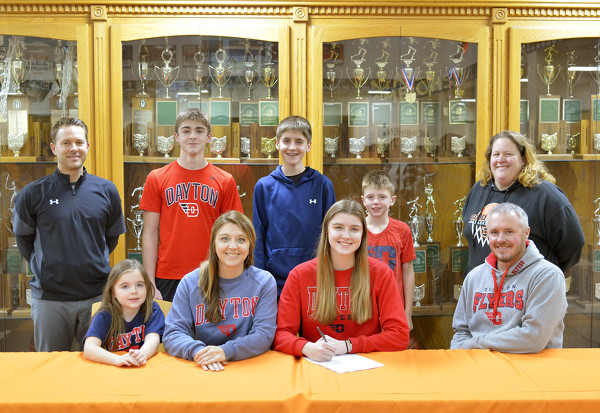Tuesday, November 15th, 2022
Professor explains German migration in 1800s
By Bob Tomaszewski

Photo by Bob Tomaszewski/The Daily Standard
Ohio State Associate Professor Tim Anderson explains chain migration.
WAPAKONETA - Tim Anderson, an associate geography professor at Ohio State University, presented Sunday at St. Paul United Church of Christ in Wapkoneta. His lecture in front of an audience of 30 concerned early German migration in a geographical and global context.
"About a quarter of the American population can trace their ancestry to German-speaking Europe," Anderson said.
Anderson said that in the 1830s, German settlers arrived in Auglaize County with a quest for a better life for their families driving much of the migration.
Anderson used the databases of the Church of Jesus Christ of Latter Day Saints and Ancestry.com to track family diasporas from Germany to the United States.
"It's who you know and where they were ... those people from back home, that influences where you go," Anderson said.
Anderson said three types of Germans settled during the 1830-40s in Ohio.
Those in eastern Ohio were settled by New England settlers, the Amish and Mennonites. Those in the south were settled by Pennsylvania Germans who erected characteristic bank barns.
Western Ohio was settled by pockets of German migrants hailing directly from Germany, he said.

Submitted Photo
One of New Bremen's early settlers, Dr. M.S. Ekermeyer, makes house calls in a horse and buggy.
In Auglaize County, many of the Germans who came in the 1830s were drawn from the same region of Ladbergen and Oldenburger Munsterland. Anderson said migration to Auglaize County included German society at the top of the lower class.
Anderson explained how Minster became a focus for Catholic immigrantion, New Bremen for Lutheran immigrants and New Knoxville for German-Reformed immigrants. Many of the early settlers in the area had last names such as Fledderjohann, Meckstroth, Schroer and Heitkamp.
Anderson said economic opportunity drove most of the migrants and their families here. German migrants wrote their families back home about the opportunity in the area, drawing more settlers in the late 1830s and 1840s. Many in the late 1840s came to escape punishment for their political beliefs.

Submitted Photo
German migrants brought their barrel-making talents to New Bremen. August Schneider and Henry Wiegman are pictured outside August Schneider's cooper shop on Vine Street in New Bremen in 1898.
Roughly half of the early immigrants were farmers or farmhands, he said. Many also performed weaving on the side to make extra money. Anderson said chains of European migrants came to Ohio by way of New England, Pennsylvania, Virginia and Maryland. He said hundreds of African-Americans came to Ohio later in the 1850s.
"In 1790 there couldn't have been more than about 10,000 white settlers in Ohio," Anderson said. Over the course of about 40-50 years that population exploded to 2 million, including many people born in the state.





